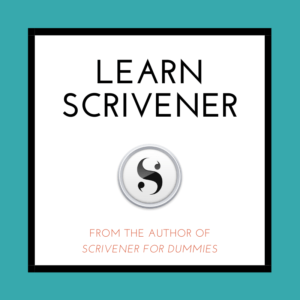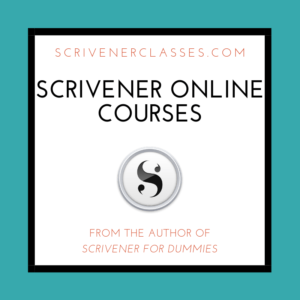
The digital world is constantly expanding, much like the universe, and in it, content serves as a compass that guides every online interaction. I’m here to illuminate how this digital constellation is navigated, with the content being the unwavering North Star that directs the interconnected web of online communications.
Content is no mere assembly of words and images; it is the heartbeat of the internet. From pithy tweets to in-depth articles, content is the essential element that bridges the gap between businesses and consumers. It shapes perceptions, drives discussions, and builds communities.
In an arena where attention is both precious and fleeting, content shines as the beacon that attracts and retains users. As such, it is not only the information conveyed but also the method of delivery that determines the pull of its gravitational force. Users are drawn to content that informs, inspires, and influences, finding themselves voluntarily revolving around the sources that provide the greatest value.
Recognizing the pivotal role of content is critical for organizations aiming to connect meaningfully with their audiences. Just like the stars in the night sky, content that is crafted with purpose and precision can lead an organization to its strategic destinations. In the following sections, I will dissect the anatomy of impactful digital content and how it anchors itself in the vastness of cyberspace.

The Anatomy of Impactful Digital Content
What makes digital content truly influential? It’s not just about stringing together pretty words or flashy visuals. , must meet users’ needs and resonate with them on a fundamental level. To craft this caliber of content, I adhere to quality’s cornerstones: Experience, Expertise, Authoritativeness, and Trust, collectively known as E-E-A-T.
It’s about offering a clear value proposition: Why should someone read, watch, or listen to your content? What will they walk away with? To this end, I ensure each piece of content has a clear purpose and delivers on its promises to the audience, providing them with insightful, actionable information.
Understanding the E-E-A-T principles is crucial. I strive for expertise by thoroughly researching topics and presenting information that’s not just accurate but also insightful. This builds authoritativeness, establishing a credible voice that readers can rely on. Every piece of content must exude authenticity, bolstering trust with the audience.
And when users can depend on your content to be reliable, authentic, and valuable, they’re more likely to return, share, and advocate for your brand. Engagement then becomes a byproduct of quality, not the sole pursuit. Now, let’s look at how putting people first shapes content into a powerful user-centric tool.

Crafting Content with a People-First Approach
I understand that meeting human needs comes before anything else. That means when I write, I’m speaking to you, real people with diverse backgrounds and questions that need answers. A people-first approach prioritizes your experiences, strives to be relatable, and aims for utmost usefulness.
It all starts with really getting to know who you are. I ask myself, ‘Who’s going to read this? What are they looking for? How can I make their lives a little easier?’ By answering these questions, I can tailor the content not just to any audience but to you specifically.
But it’s not enough to just know you. Content has to reflect that understanding by being genuine. It’s like a conversation with a good friend who knows what you need to hear and how to say it. That’s the kind of trust I build with every word I choose.
Now, a practical step in this approach is ensuring the communication is clear. Sentences should be straightforward, and where explanations are needed, they’re provided without fluff. You’re looking for answers, not a treasure hunt for information.
The outcome of applying this people-first methodology? A bridge is built between us. The content I write becomes a connective tissue, making your digital interactions smooth, rewarding, and, most importantly, valuable.
Transitioning from understanding audiences to engaging them on social media is natural. These platforms emphasize interaction and are the perfect space to test the effectiveness of a people-first content strategy. It’s here where you see if content truly resonates and sparks conversations, which is what I’ll cover in the next section.

Social Media and the Art of Engagement
I’m keenly aware of social media’s unique position in the digital realm. It’s a dynamic platform where content acts not just as a beacon but also as a catalyst for interaction. Here’s how organizations can use content to captivate and connect with their followers on social media.
First, it’s important to tailor content to each social media platform. A one-size-fits-all approach doesn’t cut it. An Instagram post might need to be visually striking and succinct, while a LinkedIn article should be detailed and professional. It’s about striking the right tone that resonates with the platform’s user base.
Creating content that inspires shares and discussions is also vital. This means crafting posts that people not only want to read but also want to pass along to others. Think about inclusivity, topical relevance, or perhaps creating handy tips that your audience will value. Don’t forget that engagement is a two-way street. Prompting users with questions and responding to comments are key ways to keep the conversation flowing.
Building a sense of community is what sets apart the best in the social media business. Encourage user-generated content to give your audience a voice and foster a community around your brand. For example, running a photo contest can ignite user interest and give followers a stake in your content.
Up next, entwining storytelling within your blog content offers an immersive experience not easily forgotten. I’ll show you how to leverage the narrative power of blogs to weave tales that capture hearts and, most importantly, minds.

Blogging: Telling Stories that Resonate
In my experience, the heart of a successful blog lies in storytelling. It’s about crafting narratives that speak directly to the reader that make complex ideas understandable and personal. Here, a brand’s voice comes to life, leaving an indelible mark on the audience.
Consistency in your brand voice is crucial. Each post should feel like a chapter from the same book, allowing readers to become familiar and comfortable with your brand like they’re getting advice from an old friend. This approach builds trust and encourages readers to return.
Effective blog content can also act as an engine for traffic and conversion. By providing valuable insights and solutions, you encourage readers to explore your offerings further, leading them to other areas of your website. It’s not just about views; it’s about sparking action.
When I think about transitions, I envision a bridge seamlessly connecting two landscapes. Similarly, your blog content should create smooth pathways to other sections of your digital presence, especially your website content. This leads us to the gateway of your digital presence.

Website Content: The Gateway to Your Digital Domain
What catches a visitor’s attention isn’t just the aesthetics of your site but the clarity of your message. The words you choose and the way you convey them can make a meaningful difference.
To create that immediate impact, focus on crafting headlines that encapsulate your core message with both brevity and clarity. The rest of your content should follow this lead, providing value and information in a clear and direct manner without overwhelming visitors.
Navigability is another non-negotiable. A well-organized website seamlessly guides users to the information they’re seeking. Think of your site’s content as a roadmap; each piece should serve as a signpost leading to the next logical step.
An underrated yet vital component of your website content is your landing pages. These are purpose-driven pages designed with a focus on conversion, whether that’s newsletter sign-ups, sales, or inquiries. Directing visitors from general content to these specific pages can greatly enhance the effectiveness of your site.
NOW, TURNING ATTENTION TO SEO, remember that as important as clarity and engagement are, they must be balanced with strategies that make your content discoverable.
SEO Considerations Without Compromising Quality
My creed as a creator is striking a balance between SEO and unforgettable content. I recognize the significance of keywords. They’re not just placeholders; they’re signposts for readers navigating the vastness of the internet. My focus is on crafting content that resonates with both people and search algorithms.
Keyword research isn’t a mere task, it’s a strategic move. It’s about uncovering the words that ring true not just for search engines but for the readers. My narrative isn’t stuffed with keywords; it’s supplemented by them, naturally woven into the fabric of my sentences, creating a seamless read without disrupting a user’s experience.
On-page optimization isn’t a box to be ticked after the fact. It’s ingrained in my process. I ensure that each piece not only reads well but also meets essential criteria, such as meta descriptions that capture the essence, proper use of headings for structure, and alt text that breathes life into images – making the invisible, visible to search engines.
The true art lies in not letting SEO overwhelm the story. Precision and clarity take precedence. After all, if content isn’t engaging and clear, it doesn’t matter how optimized it is – it won’t hold the attention necessary to matter.
Evaluating Content Performance: Metrics That Matter
As digital content creators, measuring content success is crucial. Just as an effective compass provides direction, the right metrics offer insights into the journey your content has embarked upon. The introduction of Google Analytics marked a turning point in content evaluation, enabling a data-driven approach to measuring user engagement and content effectiveness.
Engagement metrics are key indicators of success when analyzing content performance. Look at the time users spend on a page, the bounce rate, and the average number of pages per session. These numbers paint a picture of how captivating your content is and whether it meets the needs of your audience.
Conversion rates serve as a litmus test for the persuasive power of your content. Whether it’s newsletter signups, product purchases, or contact form submissions, tracking conversions can highlight the direct impact of your content on your strategic goals.
Social interactions must not be overlooked. Shares, likes, comments, and follows on platforms like Facebook, Twitter, and LinkedIn indicate how resonant and shareable your content is with users beyond your immediate website audience.
A/B testing, or split testing, is an excellent way to refine content. By presenting two variations of your content to similar audiences, you can scientifically determine which version outperforms the other in engaging users and encouraging conversions.
Ultimately, adapting content based on performance metrics is an ongoing process. It allows you to stay relevant and ensures that your content continues to serve as a beacon, leading your audience toward desired actions and deeper engagement.


Future-Proofing Your Content Strategy
Change is the one constant in the digital world. To stay relevant and continue to connect with your audience effectively, your content strategy needs to evolve alongside the accelerating pace of digital trends. Ensuring that your strategy is adaptable is not just about following the latest fads; it’s about understanding the core of what makes content effective and enduring.
Continuous learning is your beacon here. Whether it’s staying updated with new algorithms that shape how content is discovered or experimenting with emerging content formats, education remains a cornerstone of a robust strategy. The key is to balance trend awareness with a deep understanding of your audience. What technology they use, the platforms they frequent, and the conversation threads they value – these insights will guide your content’s relevance.
Beyond keeping up with trends, investing in innovation is non-negotiable. Innovative content breaks through the noise and captures attention. It offers solutions before your audience articulates their needs. This proactiveness in content creation not only sets you apart from competitors but also establishes your thought leadership.
In conclusion, the digital realm is a vast ocean of opportunity. Content, as your guiding star, illuminates the path for your audience to find value, clarity, and connection. By future-proofing your strategy, you ensure that your content remains a lighthouse amidst the ever-shifting tides, guiding your audience safely and reliably to your shores.

As a wordsmith seeking to enhance your writing prowess, you’ll find many remarkable writing tools and apps at your disposal. Let’s explore some of the best options:
- Scrivener: A beloved companion for authors, Scrivener offers a treasure trove of features. It helps you track plot threads, store character notes, structure your work, and—most importantly—get serious writing done. While it’s not free, the investment is worth it for serious writers.
- Ulysses: If distraction-free writing is your goal, Ulysses is your muse. Its minimalist interface allows you to focus solely on your words. Plus, it syncs seamlessly across devices, ensuring your creativity flows wherever you are.
- iA Writer: Ideal for online writing (think Medium or WordPress), iA Writer combines simplicity with elegance. Its clean design encourages a flow state, making it a favorite among bloggers and content creators.
- Plottr: For those who thrive on outlining, Plottr is a gem. It helps you map out your novel, organize scenes, and keep your plot threads in check. Whether you’re a pantser or a plotter, Plottr has your back.
- Reedsy Book Editor: If you’re working on a book, Reedsy’s online editor is a fantastic choice. It’s free, collaborative, and offers a straightforward interface for drafting and editing your masterpiece.
- yWriter: Scene-based writers rejoice! yWriter lets you organize your novel into scenes, track characters, and maintain a bird’s-eye view of your work. It’s a powerful tool for structuring your narrative.
Remember, the best writing app is the one that aligns with your unique needs and writing style. Whether you’re crafting screenplays, novels, or blog posts, these tools will be your trusty companions on your literary journey. Happy writing! 📝✨
Beyond Words on a Page!
Kevin


